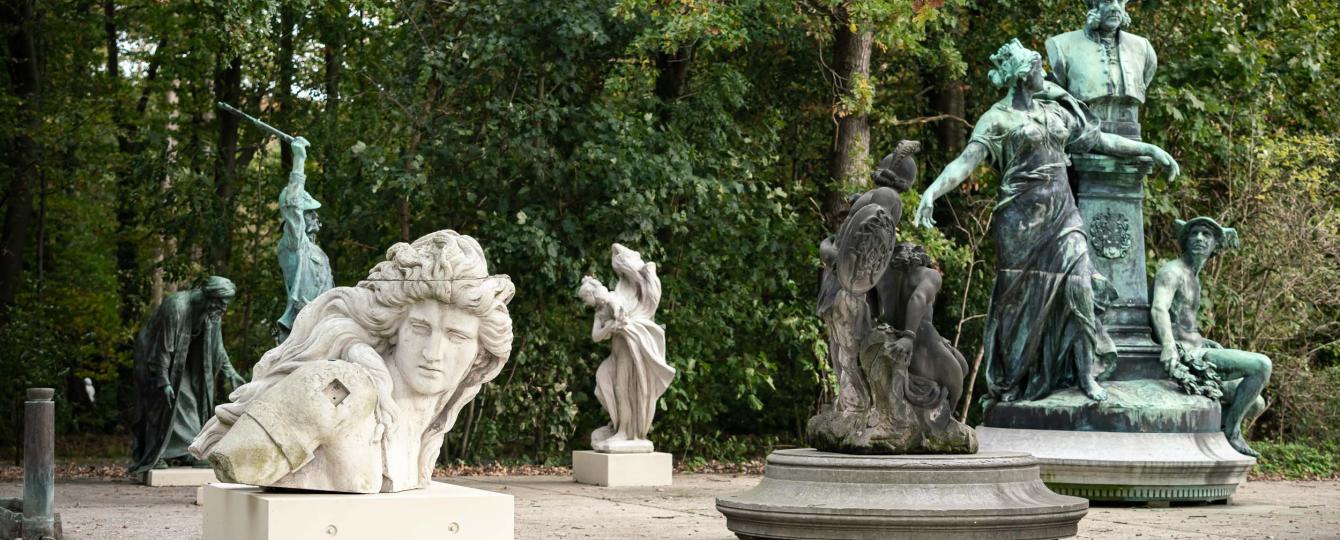Art in public space does not only physically take up public space but is also symbolically part of the public, social realm. This is why changes in the presentation of the public art collection, throughout the ages, are an important part of the story of this collection. Practical reasons and intrinsic motivations to (re)move artworks in or from public space both testify to the meaning or appreciation of these artworks and how these can change over time. Ideas about mobility, the public role of art and urban planning are all in constant development, and the public art collection is often the first to make visible these developments. The city’s public space is the natural habitat of the public art collection, so the creation of an accessible, open air storage – contrary to a traditional closed off museum storage – underlines the very public nature of this collection.
The open air storage is where sculptures are kept, permanently or temporarily, when they can no longer be shown in public space proper. There are multiple reasons why a sculpture would be taken into storage: vandalism or other damage, renewal of the public space, safety risks, shifts in the public appreciation of an artwork, or a combination of these. The open air storage allows us to safely store artworks, to maintain and preserve them, but also to continue their status as publically accessible heritage.
The current set-up of the storage is designed by architect and designer Asli Çiçek whose main point of inspiration was the chess game. The sculptures are arranged across the terrain like chess pieces, allowing each artwork to be seen individually whilst entering in a relation with the other artworks. The subtle game of sightlines and contrasts produces a dynamic display that invites you to enjoy and study these sculptures.
In the below panel conversation recorded in May 2021 , Asli Çiçek (architect and designer), Samuel Saelemakers (curator Antwerp public art collection), Neal Shasore (architecture historian), and Ellis Woodman (director Architecture Foundation) discuss the Antwerp public art collection, the open air storage’s renewed scenography, and the challenges of contested public heritage.


